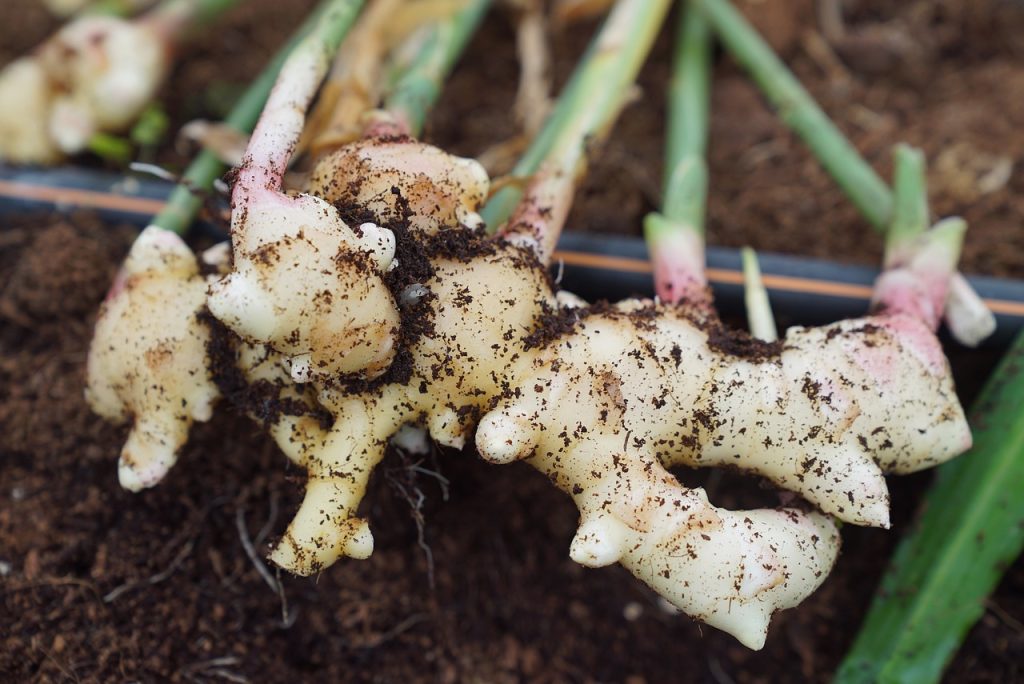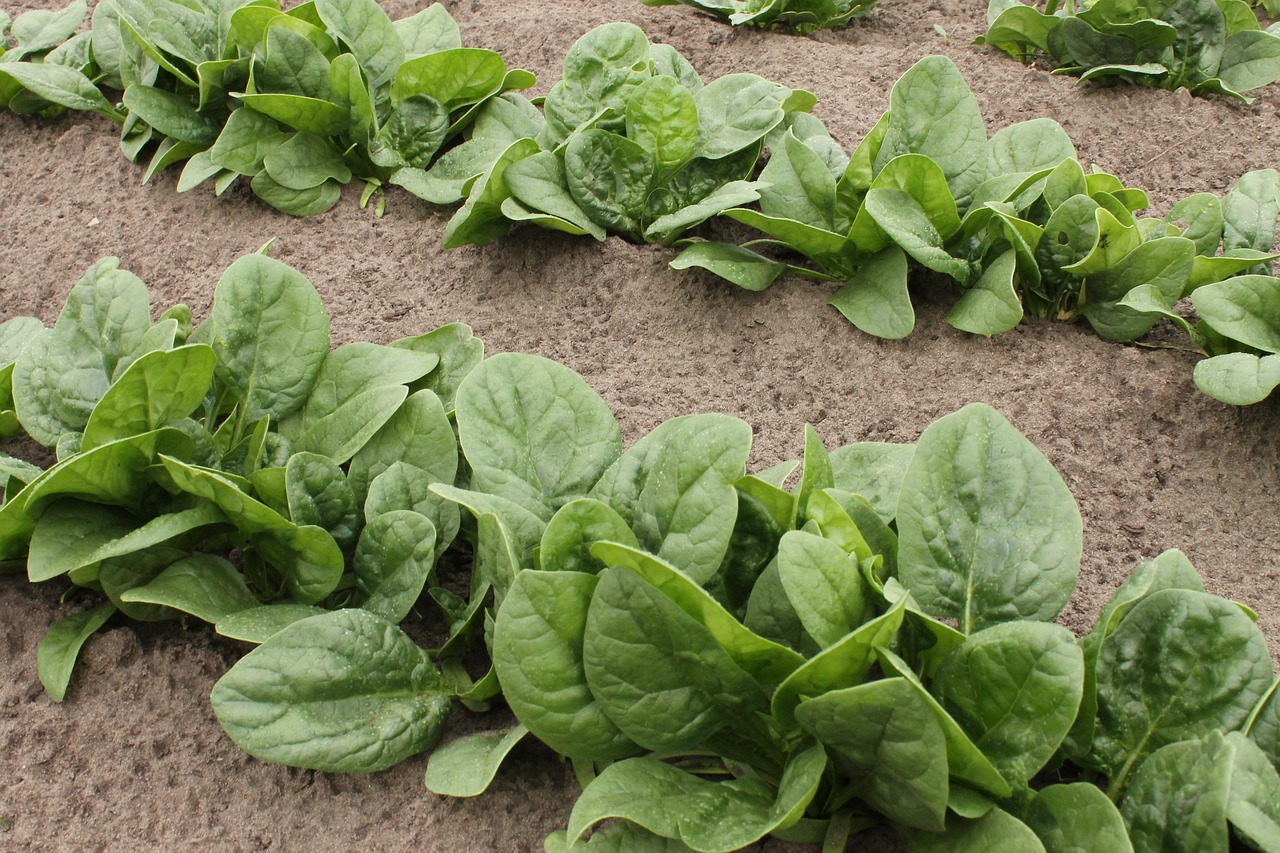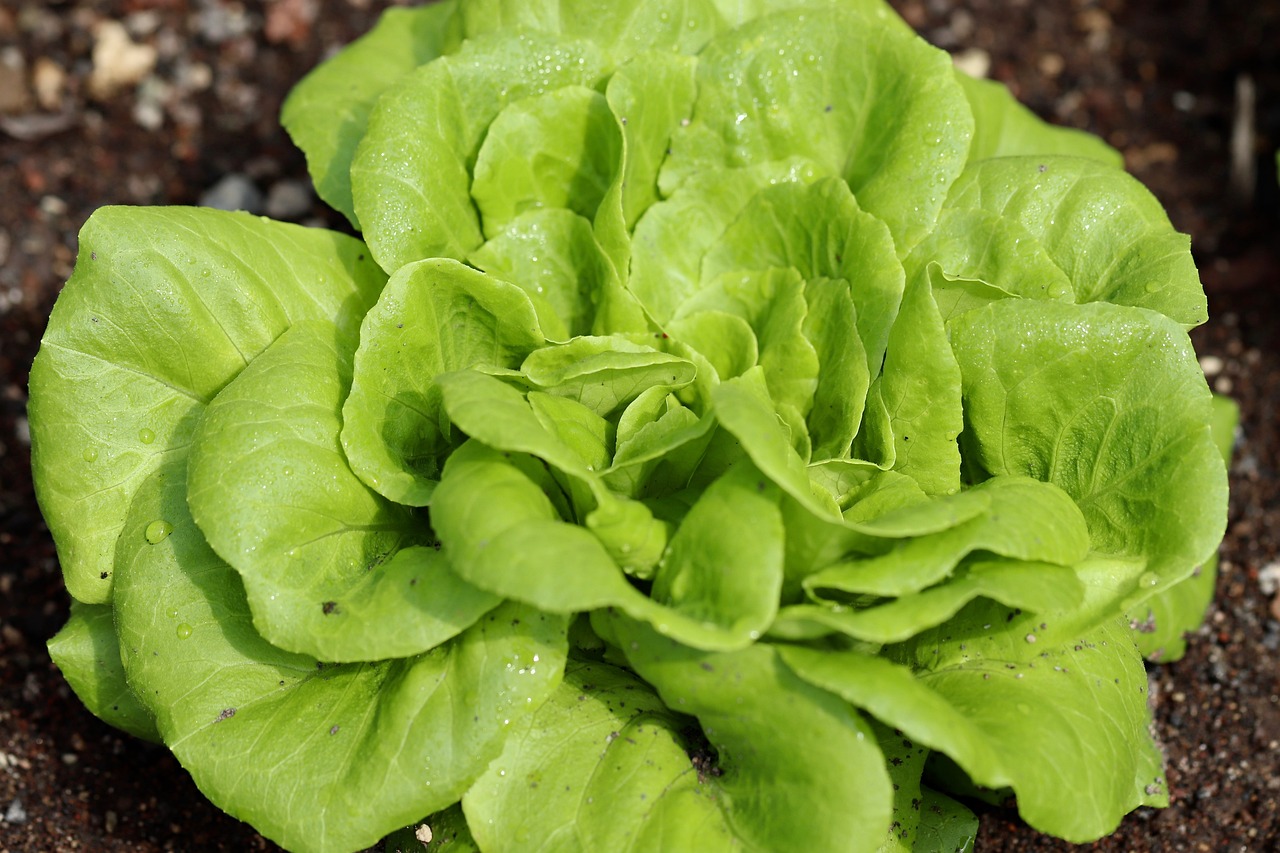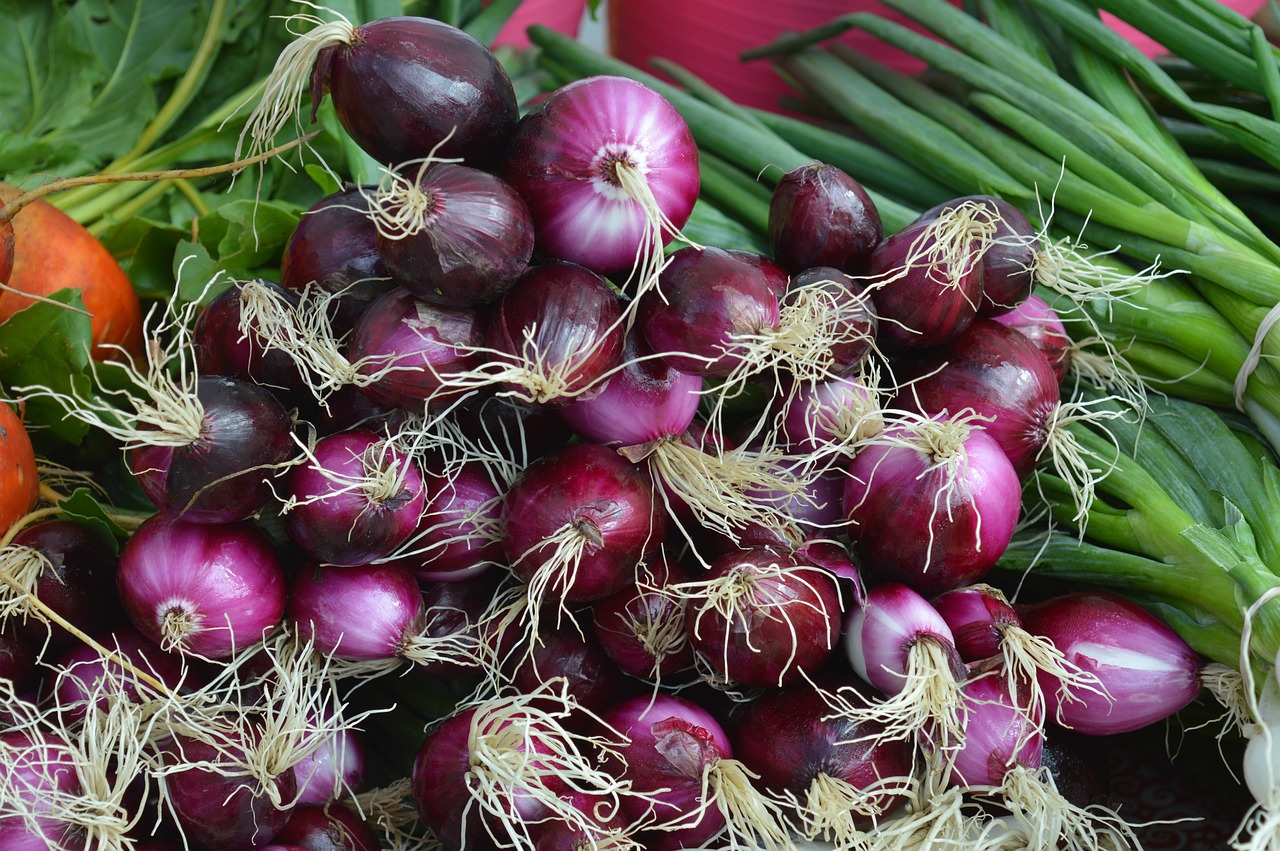Ginger is a versatile and highly valued plant with culinary, medicinal, and ornamental qualities. Its distinctive flavor, aroma, and health benefits make it a beloved ingredient in kitchens and herbal medicine cabinets worldwide. Here’s a guide on how to grow and care for ginger plants:
Description
Ginger (Zingiber officinale) is a tropical flowering plant belonging to the family Zingiberaceae and native to Asia. It is grown for its rhizomes which are underground stems that grow horizontally. These rhizomes are knobby and irregularly shaped, with a tan outer skin and a yellowish to pale interior. They have a pungent aroma and a spicy, slightly sweet flavor.
Ginger plants have tall, slender stems that can grow up to 3 to 4 feet (about 1 meter) in height. The stems are green and leafy, with lance-shaped leaves that arise alternately along the stem. The leaves are about 6 to 12 inches (15 to 30 cm) long and have a pointed tip and a prominent midrib.
Ginger is used fresh, dried, or ground in a wide range of culinary applications. It adds a distinctive flavor and aroma to savory dishes, such as curries, stir-fries, and soups, as well as sweet treats like gingerbread, cookies, and desserts.
In addition to its culinary uses, ginger is valued for its medicinal properties. It has long been used in traditional medicine to alleviate nausea, aid digestion, reduce inflammation, and relieve symptoms of colds and flu.
| Botanical name: Zingiber officinale | Propagation: Rhizomes |
| Common name: Ginger | Soil type: Loamy |
| Family: Zingiberaceae | Soil pH: 6.1-6.5 |
| Plant type: Perennial | Temperature: 750F-850F |
| Hardiness zones: USDA zones 8-12 | Light: Partial shade |
| Mature size: 2-4ft. tall, 2-3 ft. tall | Spacing: 8 to 10 inches |
| Flower color: Yellow-green | Pollination: Wind |
| Time to harvest: 8-10 months | Toxicity: Non toxic |
| Native area: Asia |
Temperature requirements
Ginger thrives in warm temperatures. The ideal temperature for growing ginger plants should be between 75°F to 85°F (24°C to 29°C) during the day.
Ginger is sensitive to frost and cannot tolerate freezing temperatures. If you’re growing ginger outdoors and live in a region with cold winters, you’ll need to protect the plants from frost by either bringing them indoors during the winter or covering them with blankets or other insulating materials.
If you’re growing ginger indoors, ensure that it receives sufficient warmth and light. Placing it near a sunny window or providing supplemental grow lights can help maintain optimal temperature conditions.
Soil requirements
Ginger prefers well-drained, loose soil that allows excess water to drain away easily. Waterlogged soil can lead to rotting of the ginger rhizomes, so it’s essential to avoid compacted or clayey soils.
Ginger grows best in loamy soil with a slightly acidic to neutral pH of 6.1-6.5. The soil should also be rich in organic matter. Incorporate compost, leaf mold or rotted animal manure to the soil before planting to facilitate fertility, improve soil structure and drainage.
Light/Sun requirements
Ginger plants thrive in locations where they receive partial shade, typically around 40-50% sunlight. This can be achieved by planting them under the canopy of taller plants or trees that provide filtered sunlight.
In areas with intense sunlight and high temperatures, provide ginger plants with morning sun and afternoon shade. This helps to prevent the soil from drying out too quickly while also protecting the plants from harsh sunlight.
Garden Preparation
Ginger prefers slightly acidic to neutral soil with a pH range between 6.1 and 6.5. Test the soil pH using a soil testing kit and amend the soil if necessary to adjust the pH level.
Remove any weeds, rocks, or debris from the planting area to create a clean and clear space for planting ginger.
Incorporate organic matter such as compost, well-rotted manure, or leaf mold into the soil to improve its structure, fertility, and moisture retention.
Dig raised beds or mounds in the garden with a height of about 6 to 8 inches (15 to 20 cm).
Planting Ginger
Purchase fresh, healthy ginger rhizomes from a reputable source or use rhizomes obtained from a previous harvest. Select firm, plump rhizomes with well-developed growth buds (also called eyes).
Plant the ginger rhizomes about 2 to 4 inches (5 to 10 cm) deep in the prepared planting beds, with the buds facing upward.
Space ginger rhizomes about 8 to 10 inches (20 to 25 cm) apart, with rows spaced at about 24 to 36 inches (60 to 90 cm) apart.
Gently cover the rhizomes with soil, lightly patting it down to ensure good soil-to-rhizome contact.
How to Care for Ginger plants
Watering: After planting, water the ginger rhizomes thoroughly to settle the soil and provide moisture for initial growth. Keep the soil consistently moist but not waterlogged throughout the growing season, especially during dry periods.
Mulching: Mulch the planting beds with a layer of organic mulch, such as straw or shredded leaves, to conserve moisture, suppress weeds, and regulate soil temperature.
Fertilization: Apply a balanced fertilizer or organic compost every 2-3 weeks during the growing season to provide nutrients for healthy growth.
Weeding: Monitor the planting beds regularly and remove any weeds that compete with the ginger plants using a hoe or by pulling them out using hands.
How to Grow Ginger in containers
Choose a large container with a minimum diameter of 12 to 16 inches (30 to 40 cm) and a depth of at least 12 inches (30 cm). Make sure the container has drainage holes at the bottom to prevent waterlogging.
Fill the container with well-draining potting mix, preferably a mix formulated for container gardening or vegetables. You can also amend the potting mix with compost or aged manure to improve fertility and soil structure.
Place the ginger rhizomes on the surface of the potting mix with the buds facing upward. Space the rhizomes about 4 to 6 inches (10 to 15 cm) apart in the container, allowing room for growth. Lightly press the rhizomes into the soil, but avoid burying them too deeply.
Water the container thoroughly after planting to settle the soil and provide moisture for the ginger rhizomes. Keep the soil consistently moist but not waterlogged throughout the growing season. Water whenever the top inch of soil feels dry to the touch.
Place the container in a location with partial shade to dappled sunlight, away from intense afternoon sun. If growing ginger indoors, choose a bright, sunny spot near a window where the plant can receive indirect sunlight.
How to Harvest Ginger plants
Ginger can be harvested 8 to 10 months after planting once the leaves start to turn yellow and die back.
Carefully dig up the rhizomes using a garden fork or shovel, being careful not to damage them.
Harvest only what you need, leaving some rhizomes in the ground to continue growing.

Storing Ginger
After harvesting, gently clean the ginger rhizomes and allow them to air dry. You can use fresh ginger in baking, cooking, teas or herbal remedies. If you do not intend to use ginger in the next few days after harvest, store it in a cool dry place or in the refrigerator where it can last up to several weeks.
Pests and Diseases
Keep checking on the ginger plants regularly for signs of pests such as aphids, spider mites, and caterpillars, as well as fungal diseases like root rot and leaf spot. Treat infestations promptly using organic insecticidal soap or neem oil, and ensure good air circulation around the plants to prevent fungal diseases.




